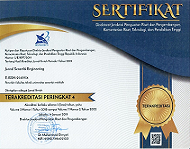Optimasi Pembuatan Bioetanol dari Limbah Bonggol Jagung Berdasarkan Beda Waktu Fermentasi dan Berat Ragi
Keywords:
bioethanol, corn cobs, hydrolysis, fermentationAbstract
Corn cobs are a waste that is rarely used and their presence continues to increase with increasing corn production capacity. The starch and carbohydrate content in corn has the potential to be used as bioethanol. This also answers the problem regarding the availability of fossil fuels in Indonesia which is starting to run low, so the presence of biomass-based fuel is the right solution. Bioethanol is a biochemical liquid obtained from the fermentation of sugar from carbohydrates with the help of microorganisms. Corn cobs have a high cellulose content so they have great potential as raw material for making bioethanol. Using corn cobs as the main ingredient in making bioethanol can reduce agricultural waste, preserve nature and increase economic value. This research aims to obtain the optimal yeast weight and fermentation time to produce the highest levels of bioethanol. The process of making bioethanol generally goes through three processes, starting from the hydrolysis process with 0.5 N sulfuric acid, the fermentation process with yeast (Saccharomyces cerevisiae), and the distillation process at a temperature of 100 °C. The fermentation process with the addition of yeast was varied by 1 gram and 3 grams with 0.09 grams of urea. Fermentation time was 1 day, 2 days and 3 days. The results of the research obtained the highest ethanol content, namely 11% on day 1 with the addition of 1 gram of yeast












